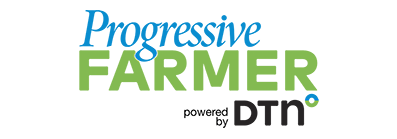8 Criteria for Culling Cows
High Cattle Prices Spur Strategic Culling, But Heifer Retention Lags
REDFIELD, Iowa (DTN) -- Cattle prices continue to be at record-high levels, which means cattle producers are doing all the extra things to ensure good health of their animals. Fall is the time when producers with spring-calving herds wean calves and make decisions on what cows will be retained for the coming year.
Oklahoma State University Extension Livestock Marketing Specialist Derrell Peel said there is no solid indication of heifer retention in 2025 so far. "The only direct data was the mid-year cattle report, which showed the lowest beef replacement heifer inventory in the history of that particular data set," he said. And with the 2025 calf crop projected to be the lowest since 1941, he questions how quickly any rebuilding could be seen.
While some say the high cattle prices have made producers more stringent on what they will put up with when deciding on what cows to keep, others suggest good culling practices will improve the long-term reproductive performance of the cow herd.
Dan Childs, former agricultural economics consultant for Noble Research Institute said culling needs to be done each year to maintain optimal productivity. "Records on each cow's yearly production would be beneficial when making culling decisions," he said. "Cattlemen should make a point to evaluate all breeding females at least once a year."
Childs prioritizes his culling procedure with an 8-point list.
1) Disposition. Producers should know what they are willing to tolerate and evaluate cows in the pasture and in a pen. Note which animals are harder to gather or are aggressive.
2) Open females. All open females should be culled. It's hard for an open cow to make up for the year of lost production. Make sure cows fit into their management environment.
P[L1] D[0x0] M[300x250] OOP[F] ADUNIT[] T[]
3) Structural soundness. Cows should be evaluated for their ability to raise a calf. Structural soundness is not only good feet and legs, but also reproductive soundness, eye problems, and udder quality.
4) Age. Cows are typically most productive between the ages of 4 and 9. A cow's teeth should be evaluated as she gets older regarding her ability to properly eat and keep in condition.
5) Bred cows older than 9 years of age. Cows that get older in age will likely be culled soon and are close to the end of their most productive years.
6) Replacement heifers. Yearling heifers that have not been exposed to a bull have good value when sent to the feedlot.
7) Phenotype. Producers can make their herds more uniform looking when they are more stringent on culling due to breed, size or productivity.
8) Bred cows 3 to 9 years of age. These are the most productive cows and should be the last ones considered for culling.
Each operation is different, but ensuring good productivity during high prices is important.
Mark Johnson, Oklahoma State University Extension beef cattle breeding specialist points out the importance of culling open heifers in order to benefit the herd's bottom line. "Pregnancy can be diagnosed by palpation at 60 days and by ultrasound as early as 30 days, so now is the time to take action and cull the open heifers," he said.
Johnson said well-developed yearly heifers going into their first breeding season should conceive in 45-60 days. Culling the heifers who are open or taking longer to conceive could mean better reproductivity in the long run.
"It is good management practice to breed heifers to calve a little ahead of our mature cow herd. It permits us to concentrate our management efforts during the heifer's calving season and gives them a little extra time to breed back and calve on schedule the following year," he added.
Overall, good management practices and culling problem females is a practical way to improve fertility and profitability.
Peel said there's currently no data to confirm producers are retaining enough heifers to initiate herd rebuilding. The beef cow slaughter numbers have dropped, but he said this is likely because most producers have culled the problem cows and now are back to a slower cull rate. "Without heifer retention, the clock does not start on the timeline to anticipate the peak in prices and the duration of elevated prices," Peel concluded. "It looks increasingly like that peak is being pushed into the last part of the decade."
Jennifer Carrico can be reached at jennifer.carrico@dtn.com
Follow her on social platform X @JennCattleGal
(c) Copyright 2025 DTN, LLC. All rights reserved.






